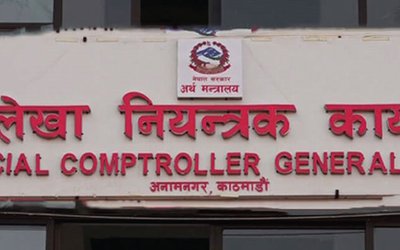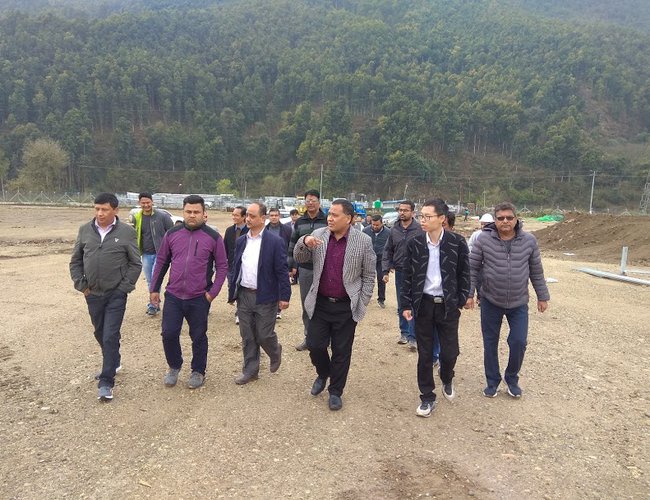
As the first unit of a 25-MW solar power plant, which is now under the final stage of completion started a generation of 1.5 MW electricity last month, Nepal’s electricity system has entered into a new phase.
Solely relying on hydro-electricity and import of electricity from India, this plant has opened a new history by mixing solar energy into hydropower generated electricity. This also breaks the reliance on almost 150 years on hydropower and diesel-based energy.
Although the 700 kW plant of Kathmandu Upatyaka Khanepani Ltd is the first plant to supply solar electricity to NEA’s national grid, it is just a small unit and its contributions are small.
Started in 2014, the project was delayed by almost six years due to several internal obstructions. The House of Representatives Public Accounts Committee held the project file for almost a year questioning the accountability part in 2015.
However, the completion of a 25 MW project gives a sigh of relief as well as enhancing the Nepal Electricity Authority’s institutional credibility in front of multilateral agencies.
The completion of the 25-MW project is likely to contribute immensely to manage the national grid.
Making breakthroughs, one after another, even while continuing the construction work in various projects during the lockdown, Managing Director of Nepal Electricity Authority Kul Man Ghising has added another feather in his cap.
MD Ghising, who set history by ending two decades of severe load shedding in Nepal, has now made another record to generate solar energy for the national grid.
By connecting 1.5 MW electricity generated by solar power to the national grid, NEA has entered into the new phase. This is the first unit of 25 MW solar power plant which is now under construction.
“Within one and a half months, 10 MW will be added to the national grid from the project,” said MD Ghising, who was on the project sites to start the unit. “The construction of 15 MW work will be delayed a little because the process of Initial Environment Examination (IEE) is in the process,” said MD Ghising.
Although the project was supposed to complete on Baisakh 15, the lockdown affected the construction work. After the production of electricity from solar, the system has diversified work, mixing solar in hydro.
With strong backing from technical and managerial teams of NEA, MD Ghising was able to complete the installation of the first unit evacuating the electricity to the national grid. This is the first largest solar plant and first solar project to mix in with the hydropower dominated energy.
Following the complete installation of the first unit of 25 MW solar plants in Devighat Hydropower, 1.5 MW solar electricity is added to national grid. On the availability of sunlight, it will generate 80-90 percent of electricity.
The electricity, which is generated by the solar plant installed inside the land owned by Nepal Electricity Authority in Devighat Hydropower, has already evacuated through the substation to the national grid.
As there is no provision of battery for storage, the plant will generate electricity during sunny days only. The government has already planned a long term policy to attain self-reliance in electricity in 15 years with a production target of 15000 MW. The government has also announced the portion of mixing.
According to the policy, there will be 30-35 percent from pump storage, 25-30 percent from the run-off-the river and 30-35 other alternative sources with 5-10 ratios.
In Devighat, the panels to generate 10 MW will be installed near the land of employee’s residents and other panels for 15 MW will be installed in the powerhouse areas. One panel will generate 275 Watt and 20 Ropanies of land will be required to install a solar panel to generate 1 MW.
“New substation for 66-33 kV is under construction now. Now the electricity is evacuated with alternative arrangements through the existing 33 kV transmission line,” said Bikas Bahadur Raghubansi. He said that the necessary equipment for the substation is arriving.
Minister for Energy, Water Resources and Irrigation Barshaman Pun laid the foundation of the project in 2075 Baisakh with a target to complete it within a year. However, the project was delayed due to design approval and cutting trees.
“It took more time to get permission to clear the trees under the ownership of the Nepal Electricity Authority. The contractor delayed the design and the consultant’s long review process further delayed the project construction period,” said Raghubansi.
Constructed through the World Bank’s Grid Solar and Energy Efficiency Project, Chinese Company Risen Energy was awarded the construction contract of 30.8 million US dollars. The contractor will operate, construct, and maintain the project for the coming five years.
The company will hand over the project in an operational condition in five years. The company has ensured to generate 33 million units of energy.
After the full operation, the project will help to ease the shortage of electricity in the national grid during the winter.
As the project is near the Kathmandu load center, it will help improve the quality and reliability of electricity supply in Kathmandu Valley. After the completion of the project, it will ease the burden of the Kulekhani Reservoir project, Kaligandaki A, middle-Marsyangdi, Marsyangdi and Chillemi and help them to accumulate the water in the day time to generate electricity in the peaking time. NEA holds the view that the project helps maintain the supply and management of electricity during the peaking.
With the objective to increase solar photovoltaic generated electricity to supply to the Nepal Electricity Authority (NEA) grid; and to reduce NEA's distribution losses in selected distribution centers, the World Bank agreed to support the Grid Solar and Energy Efficiency Project for Nepal in 2014.
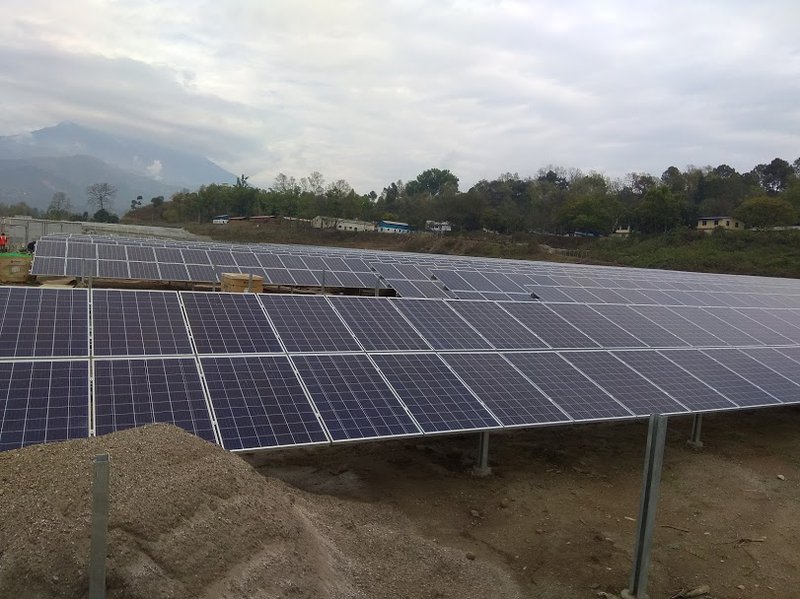
However, the project was postponed for years due to several internal reasons. The project took the shape after Ghising was appointed Managing Director of Nepal Electricity Authority.
MD Ghising revived the project which was virtually at the stage of collapse. Realizing the long term implications for Nepal’s Energy sector, MD Ghising brought the project renegotiating with the World Bank.
The project beneficiaries are grid-connected electricity consumers throughout the country, who will benefit from increased power supply to the grid. The NEA is also expected to benefit from the project mainly with improved operational efficiency and gained experience in large-sized grid-connected solar farms.
The proposed project consists of two components: (a) Grid-connected Solar PV Farms Development; and (b) Distribution System Planning and Loss Reduction. The total cost estimated for the proposed Project is US$ 138.0 million, including interest during construction, physical and price contingencies.
The Grid-connected Solar PV Farms Development component will support the design, supply, construction, commissioning, and operation and maintenance of grid-connected solar farms to supply electricity directly to NEA's distribution network.
According to the World Bank, there is also a provision of technical advisory services to assist NEA with, inter alia, the procurement and supervision of the engineering, procurement, and construction contract for the solar farms.
The project will also support capacity-building activities to assist NEA with, inter alia, independent bid evaluation, project management, contract execution, and operation and maintenance of the solar farms.
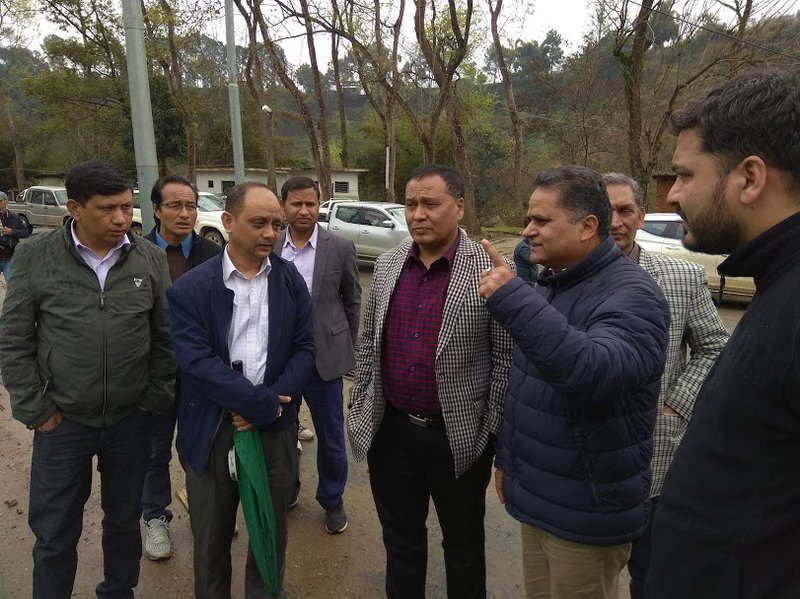
This project also includes the Distribution System Planning and Loss Reduction component will support the preparation of a distribution master plan, preparation of a system loss reduction master plan.
The project also aims at carrying out a set of activities in system loss reduction in selected NEA's distribution centers, including replacing conductors of distribution feeders or building distributions.
Although the project is small in terms of its capacity and cost, this project is a model project which helps to enhance the institutional technical capacity of Nepal Electricity Authority in the areas of solar energy.
As NEA has signed PPA with private sectors to purchase solar energy, completion of the project and connecting to the national grid have been highly significant. Completing several delayed projects like Kulekhani III. Chameliya, Trishuli 3 A and several transmission lines projects and ending the prolonged load-shedding, MD Ghising has shown his skills to mobilize highly qualified technical teams of NEA.
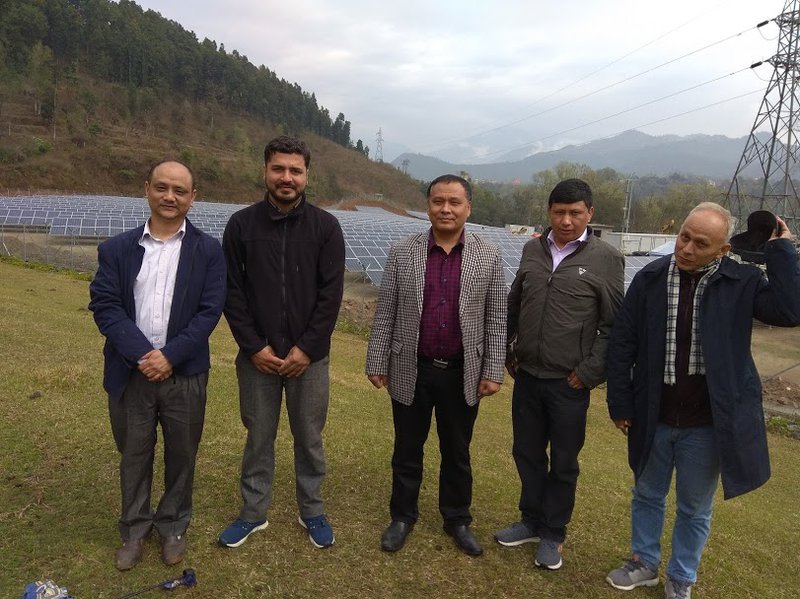
The completion of the Solar Plant and connecting it to the national grid, MD Ghising pushed Nepal’s electricity sector towards a new era of mixing solar into hydro. Given the development of new technology in solar energy, this project will be a game-changer. For this, the efforts of MD Ghising and his technical team will be remembered.
Started more than one and half-century ago with the introduction of hydropower by Rana Prime Minister Chandra Sumsher, solar energy has entered into a bigger shape now.
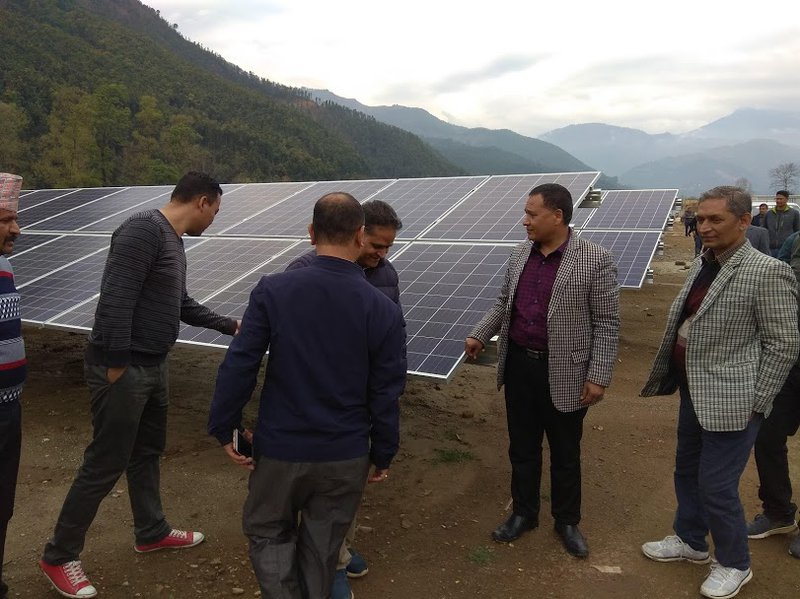

Keshab Poudel
Poudel is the editor of New Spotlight Magazine.
- ECONOMY: Growth At 3.3
- Apr 16, 2024
- DPM’s SHRESTHA’S CHINA VISIT High Profile, Low Key
- Apr 14, 2024
- Maha Kumbha In Barahkshetra: A Sacred Festival In Sacred Koshi (Kaushiki) River
- Apr 09, 2024
- LOSS AND DAMAGE: Upper Tamakoshi A Case
- Apr 02, 2024
- Helvetas-Nepal’s InElam Promoting Herbal Oil In Sarlahi
- Mar 31, 2024






